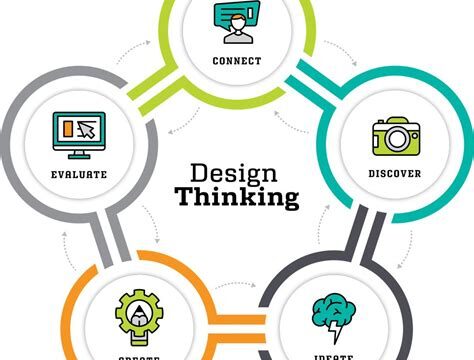Establishing the workshop goals
When embarking on a new project, it is crucial to establish clear workshop goals. These goals serve as a roadmap, guiding the team towards a successful outcome. The workshop goals create a shared vision and understanding among team members, ensuring that everyone is aligned and working towards the same objectives.
Creating workshop goals involves a thorough understanding of the project and its requirements. It requires research and gathering insights about the end-users, their needs, and the problem that needs to be solved. Armed with this knowledge, the team can set realistic and achievable goals that address the project’s core challenges.
One effective way to establish workshop goals is by defining a problem statement. This statement succinctly captures the main issue the project aims to solve. It provides clarity and direction, serving as a guidepost for the rest of the workshop process.
Researching and understanding the users’ needs
Researching and understanding the users’ needs is a crucial step in any design process. It involves gathering information about the target audience, their preferences, motivations, and pain points. By conducting thorough research, designers can gain valuable insights that will help them create user-centered solutions.
One of the key methods for understanding users’ needs is through user interviews and surveys. These techniques allow designers to directly interact with the target audience and gather their perspectives. By asking relevant questions, designers can gain insights into users’ behaviors, goals, and challenges. This information helps in creating a user persona, which is a fictional representation of the target user.
Another important research method is conducting competitor analysis. By studying the products or services offered by competitors, designers can gain insights into what works well in the market and identify potential gaps. This analysis helps in understanding user expectations and designing solutions that stand out from the competition.
- Interviewing and surveying users
- Creating user personas
- Conducting competitor analysis
In addition to interviews and competitor analysis, designers can also utilize other research techniques such as observation and usability testing. By observing users in their natural environment, designers can gain insights into their behaviors and identify pain points that they might not express in interviews. Usability testing involves observing users as they interact with prototypes or existing products to identify areas for improvement.
Overall, researching and understanding the users’ needs is essential for creating effective designs. By gathering insights through various research techniques, designers are able to identify user preferences, motivations, and pain points. This understanding helps in developing solutions that meet the needs of the target audience and ultimately leads to a better user experience.
Defining the problem statement
When it comes to problem-solving, one of the crucial steps in the design process is defining the problem statement. This step sets the stage for the entire project and provides clarity on the issue at hand. Without a clear problem statement, it can be difficult to generate effective solutions. In this blog post, we will dive deeper into the importance of defining the problem statement and discuss the steps to effectively articulate the problem.
Why is defining the problem statement important?
Defining the problem statement is like setting a clear direction for your design project. It helps you focus on the specific issue you are trying to solve and ensures that your efforts are aligned towards the right goal. Without a well-defined problem statement, there is a higher risk of developing solutions that are irrelevant or that miss the mark.
The process of defining the problem statement
1. Research: Before you can define the problem statement, it is crucial to conduct thorough research and gain a deep understanding of the problem. This includes gathering information about the users, their needs, and the context in which the problem exists.
2. Identify the root cause: Once you have conducted research, analyze the data to identify the underlying cause of the problem. This will help you avoid addressing symptoms instead of the actual problem.
3. Clearly articulate the problem: After identifying the root cause, it’s time to clearly articulate the problem statement. This involves describing the problem in a concise and precise manner. Make sure to use language that is easily understandable and avoid jargon or technical terms that might confuse your audience.
By following these steps, you can effectively define the problem statement and lay the foundation for developing impactful solutions. Remember, a well-defined problem statement sets the stage for success in the design process.
Generating a wide range of ideas
When it comes to problem-solving and innovation, generating a wide range of ideas is crucial. This step in the design process allows for a diverse set of possibilities and potential solutions to be explored. By encouraging creative thinking and brainstorming, teams can uncover unique insights and perspectives that may not have been considered initially. The goal of generating ideas is to push boundaries and think outside the box, ultimately leading to innovative and effective solutions.
To ensure a successful ideation phase, it is important to create a collaborative and supportive environment. This can be achieved through workshops or brainstorming sessions where team members are encouraged to freely share their ideas without judgment or criticism. A diverse group of participants can also enhance the idea generation process by bringing different perspectives and expertise to the table.
During the idea generation phase, it is beneficial to use various techniques and tools to stimulate creativity and encourage participation. One common method is brainstorming, which involves rapid idea generation without evaluation or judgment. This allows ideas to flow freely and encourages participants to build upon each other’s thoughts. Another technique is mind mapping, where a central theme or problem is surrounded by related ideas and concepts, creating a visual representation of the brainstorming session.
Furthermore, utilizing the power of technology can greatly enhance idea generation. Online collaboration tools and platforms provide opportunities for remote teams to contribute their ideas and collaborate in real-time. These platforms often offer features such as virtual whiteboards, idea boards, and chat functionalities that facilitate the sharing and development of ideas.
- Encourage collaboration: Create a supportive and collaborative environment where team members feel comfortable sharing their ideas without fear of judgment.
- Utilize diverse perspectives: Include participants from different backgrounds and areas of expertise to enhance the idea generation process.
- Use brainstorming techniques: Employ methods like rapid idea generation, mind mapping, and online collaboration tools to stimulate creativity and facilitate participation.
| Idea Generation Techniques | Description |
|---|---|
| Brainstorming | A method where participants rapidly generate ideas without evaluation or judgment. |
| Mind Mapping | A visual tool that helps organize and connect related ideas and concepts. |
| Online Collaboration Tools | Technological platforms that enable remote teams to share and develop ideas in real-time. |
Developing and prototyping the solutions
When it comes to problem-solving and innovation, developing and prototyping the solutions is a crucial step in the design process. It is during this stage that designers and developers work hand in hand to bring ideas to life and test their feasibility. The goal is to create tangible representations of the proposed solutions, allowing for a more concrete understanding of how they will function and interact with users.
One of the most effective ways to develop and prototype solutions is by utilizing the iterative design approach. This approach involves creating multiple iterations of the solution, refining and improving it with each iteration based on user feedback and testing. By continuously iterating and seeking user input, designers can address any potential shortcomings and create a solution that truly meets the users’ needs.
Another important aspect of developing and prototyping solutions is the use of content-rich elements. Content-rich elements provide valuable information and context to users, helping them better understand the purpose and functionality of the solution. This can be achieved through the use of informative text, images, videos, and interactive features.
- Informative text: Clearly explaining the features and benefits of the solution.
- Images: Including visuals to illustrate how the solution will look or function.
- Videos: Providing demonstrations or tutorials to showcase the solution in action.
- Interactive features: Allowing users to interact with a prototype and experience its functionality firsthand.
In addition to content-rich elements, designers can also utilize list and table HTML tags to organize and present information in an easy-to-digest format. Lists can be used to outline the key features or steps involved in the solution, while tables can be used to compare different options or variations. By using these HTML tags, designers can create visually appealing and structured content that guides users through the solution.
Testing and gathering feedback
Testing and gathering feedback are crucial steps in the design process. It is important to validate and refine the ideas and prototypes that have been developed. Testing allows designers to gather insights and feedback from users, while feedback helps to identify areas of improvement and make necessary adjustments. In this blog post, we will explore the significance of testing and gathering feedback, and how it helps in creating successful and user-centered designs.
Testing involves conducting usability tests, user interviews, and other evaluation methods to understand how well a design meets the users’ needs and expectations. It allows designers to observe users’ interactions with the product or service, identify potential usability issues, and gain valuable insights into user behavior. By involving real users in the testing process, designers can gather authentic feedback that can guide them in making informed design decisions.
Gathering feedback is not limited to the testing phase. Designers can also seek feedback at earlier stages, such as during ideation or prototyping. This helps in identifying potential flaws or gaps in the design concept before investing too much time and resources. Feedback can be collected through various channels, including surveys, focus groups, and user feedback sessions. It is important to encourage honest and constructive feedback to get a holistic view of the users’ preferences and needs.
List of benefits of testing and gathering feedback:
- Identifying usability issues: Testing allows designers to uncover any usability problems or obstacles that users might encounter while interacting with the design.
- Improving user experience: By engaging users in the testing process, designers can gain insights into their preferences and expectations, enabling them to make design improvements that enhance the overall user experience.
- Validating design choices: Testing validates the design choices made by designers, providing confidence that the chosen solutions are effective and user-friendly.
- Gaining a competitive edge: By continuously testing and gathering feedback, designers can stay ahead of the competition by consistently improving and refining their designs based on user insights.
Table: Different methods for testing and gathering feedback
| Method | Description |
|---|---|
| Usability Testing | Observing users while they complete tasks to evaluate the ease of use and effectiveness of a design. |
| User Interviews | Conducting one-on-one interviews with users to gather qualitative feedback about their experiences and preferences. |
| Surveys | Collecting quantitative data from a large number of respondents to gain insights into user preferences and satisfaction levels. |
| Focus Groups | Gathering a small group of users to facilitate discussions and obtain diverse perspectives on a design. |
| Feedback Sessions | Organizing sessions to directly engage users and collect their feedback on specific design elements. |
In conclusion, testing and gathering feedback are integral parts of the design process. By utilizing various evaluation methods and consistently seeking user insights, designers can create designs that meet users’ needs, preferences, and expectations. Testing allows for the identification of usability issues, while feedback helps in validating design choices and improving the overall user experience. Embracing testing and feedback as iterative components of the design process can lead to successful and user-centered designs that ultimately provide value to the end-users.
Refining and iterating on the designs
Refining and iterating on the designs is a crucial step in the design process. It is during this phase that the initial concepts and prototypes are evaluated, refined, and improved upon. This iterative process allows designers to incorporate feedback and make necessary adjustments to create a final product that meets the users’ needs and expectations.
One of the key aspects of refining and iterating on designs is gathering feedback from users. This can be done through various methods such as usability testing, surveys, and interviews. By engaging with the users and understanding their experiences and preferences, designers can gain valuable insights to guide the refinement process.
In addition to user feedback, designers also need to consider other factors such as technical feasibility, business goals, and market trends when refining and iterating on the designs. It is important to strike a balance between the users’ needs and the constraints and requirements of the project.
- User-centric approach: Throughout the iterative process, it is essential to keep the focus on the users. Their needs, desires, and pain points should drive the refinement and iteration of the designs.
- Collaboration: Refining and iterating on designs is a collaborative effort. Designers should work closely with stakeholders, developers, and other team members to gather input and gain different perspectives.
- Attention to detail: During the refining stage, designers should pay close attention to every detail of the design. This includes elements such as typography, color schemes, navigation, and overall user experience.
| User Feedback | Considerations |
|---|---|
| Usability testing | Technical feasibility |
| Surveys | Business goals |
| Interviews | Market trends |
Refining and iterating on the designs is an ongoing process that continues until the final product is delivered. It requires constant evaluation, adjustment, and improvement to ensure that the design meets the desired goals and objectives. By following a systematic and user-centric approach, designers can create designs that not only look visually appealing but also provide a seamless and satisfying user experience.
Frequently Asked Questions
What are the goals of establishing a workshop?
The goals of establishing a workshop are to provide a space for brainstorming and problem-solving, promote collaboration and creativity, and develop innovative solutions to a problem.
Why is it important to research and understand users’ needs?
Researching and understanding users’ needs is important because it helps designers and developers create products or services that meet those needs. By understanding users’ pain points, preferences, and behaviors, designers can ensure the final solution is user-centered and has a higher chance of success.
What is the significance of defining the problem statement?
Defining the problem statement is crucial as it helps in clearly understanding and articulating the issue that needs to be addressed. It is the foundation for the entire design process and guides subsequent stages, ensuring that the efforts are focused on solving the right problem.
Why is generating a wide range of ideas important in the creative process?
Generating a wide range of ideas is important because it encourages creativity, exploration of different possibilities, and avoids premature judgment. It allows for diverse perspectives, promotes innovation, and increases the likelihood of finding unique and effective solutions.
Why is developing and prototyping the solutions important?
Developing and prototyping the solutions is important as it helps in visualizing and testing the feasibility of the proposed ideas. Prototyping allows designers to gather feedback early on, identify potential flaws, make improvements, and refine the proposed solutions before investing significant resources into their implementation.
What is the role of testing and gathering feedback in the design process?
Testing and gathering feedback play a crucial role in the design process as they provide valuable insights into the effectiveness and usability of the solution. Testing allows designers to identify any usability issues, understand user reactions, and make informed decisions to refine and improve the design based on user feedback.
Why is refining and iterating on designs necessary?
Refining and iterating on designs is necessary to enhance their effectiveness and ensure they align with user needs and expectations. By continuously evaluating and making improvements, designers can create more refined and user-friendly solutions that address the identified problem statement more effectively.





